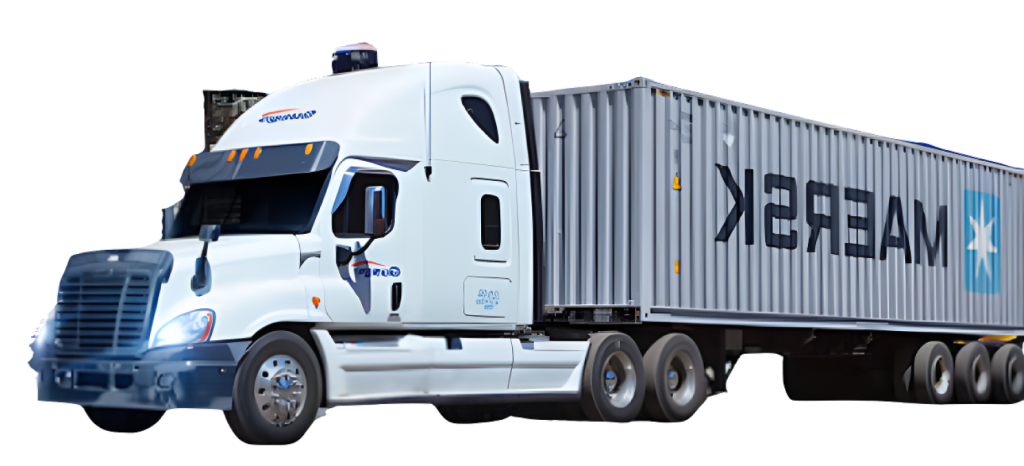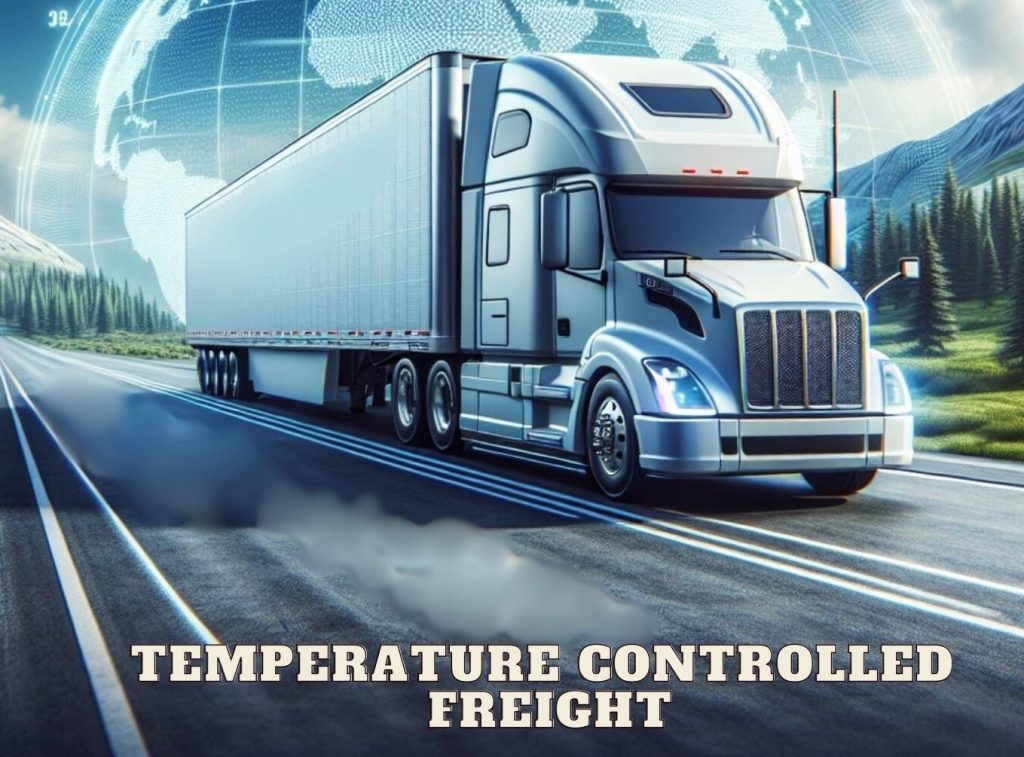ESSENTIAL INSIGHTS FOR COLD CHAIN MANAGEMENT SUCCESS
In the intricate world of logistics, temperature controlled freight plays a crucial role in the safe and efficient transportation of perishable goods and temperature-sensitive materials. This specialized area, often referred to as cold chain management, is essential for preserving product integrity and meeting stringent safety standards throughout the shipping process. Navigating the complexities of cold chain logistics requires a comprehensive understanding of standard temperature ranges, overcoming common challenges, and implementing best practices in the field. By employing advanced temperature monitoring technology and adhering to rigorous shipping compliance protocols, businesses can ensure their cold chain operations not only meet industry requirements but also exceed customer expectations.
Understanding Temperature Controlled Freight
What is Temperature Controlled Freight?
Temperature controlled freight, often synonymous with refrigerated or frozen shipping, extends beyond simple cooling needs. At its core, this shipping method safeguards goods from temperature fluctuations during transit, whether they require cooling or heating. The entire journey—from the origin to the destination—demands precise temperature regulation. This intricate process is vital for industries that depend heavily on maintaining product quality, such as food and beverage, healthcare, and retail. For instance, temperature controlled freight is crucial for transporting pharmaceuticals, which may become ineffective if exposed to incorrect temperatures. The ability to maintain consistent conditions ensures that perishable goods remain safe and effective for end consumers. As the demand for temperature sensitive transport increases, understanding this freight option becomes essential for businesses seeking to protect their products and meet shipping compliance standards. Reliable temperature monitoring technology is a key component in achieving this objective.
Common Temperature Ranges
Temperature controlled freight must adhere to specific temperature ranges to preserve the integrity of various products. Common ranges include chilled, frozen, and ambient conditions, each serving different types of goods. Chilled temperatures, typically between 32°F and 50°F (0°C and 10°C), are suitable for products like fresh produce and dairy. Frozen temperatures, often below 0°F (-18°C), are essential for meats and ice cream, ensuring they remain safe and free from spoilage. Ambient temperatures, ranging from 50°F to 70°F (10°C to 21°C), maintain stability for goods that do not require refrigeration but are sensitive to temperature fluctuations. Each range requires specific handling and equipment to prevent degradation. For instance, a slight increase in temperature can dramatically reduce the shelf life of produce, emphasizing the need for precise control. Understanding these ranges is critical for businesses involved in cold chain logistics to meet shipping compliance and customer expectations efficiently.
Importance for Perishable Goods
Temperature controlled freight is critical for the safe transport of perishable goods. These goods, such as fresh produce, dairy products, and pharmaceuticals, are highly sensitive to temperature changes. A slight deviation from their required temperature range can lead to spoilage, loss of efficacy, and significant financial loss. For example, studies show that a mere 2°F increase in a cold room can cut produce shelf life by half due to decreased humidity levels. This highlights the necessity for precise temperature management during transit. The rise of e-commerce has further increased the demand for temperature controlled shipping as more perishable goods are delivered directly to consumers. This requires a robust cold chain management system to ensure products remain safe and intact upon delivery. Thus, businesses must prioritize temperature monitoring technology and compliance with shipping regulations to maintain product quality and safety, safeguarding both company reputation and consumer health.
Challenges in Cold Chain Management
Equipment and Technology Failures
Equipment and technology failures pose significant challenges in cold chain management. Refrigeration units and temperature monitoring devices are critical for maintaining the required conditions throughout the shipping process. However, malfunctions can occur due to mechanical issues, human error, or inadequate maintenance. Such failures can lead to temperature excursions that compromise product quality, safety, and efficacy. For instance, a breakdown in a refrigerated truck might result in perishable goods reaching unsafe temperatures, leading to spoilage. Additionally, outdated or poorly calibrated monitoring technology can provide inaccurate data, making it difficult to detect and address issues promptly. To mitigate these risks, businesses should invest in regular maintenance of equipment and adopt advanced temperature monitoring systems with alerts for temperature deviations. Training staff to handle equipment effectively and respond to failures swiftly is also crucial. By addressing these potential points of failure, companies can enhance the reliability of their cold chain logistics operations.
Regulatory Compliance Issues
Regulatory compliance is a major challenge in cold chain management. The transportation of perishable goods requires adherence to stringent regulations to ensure product safety and quality. These regulations, which vary by region and product type, dictate temperature ranges, handling procedures, and documentation standards. Non-compliance can result in hefty fines, shipment rejections, and reputational damage. For instance, the Food Safety Modernization Act (FSMA) in the United States imposes strict guidelines on the sanitary transportation of food, requiring detailed records and rigorous monitoring. Keeping up with these evolving regulations demands continuous education and system updates. Businesses must ensure all staff are trained in compliance protocols and that their operations are regularly audited. Investing in technology that provides real-time monitoring and comprehensive reporting can aid in maintaining compliance. By proactively managing these regulatory requirements, companies can reduce the risk of penalties and ensure their cold chain logistics meet industry standards.
Training and Staff Competency
Training and staff competency are critical components of effective cold chain management. The complexity of managing temperature controlled freight demands skilled personnel who understand the intricacies of maintaining proper conditions throughout the logistics process. Inadequate training can lead to mishandling of equipment, incorrect temperature settings, and delayed response to issues, all of which can compromise product integrity. Employees must be knowledgeable about the specific temperature requirements for different products, as well as the operation of refrigeration units and monitoring technology. Regular training sessions should cover regulatory standards, best practices in handling temperature sensitive goods, and emergency response protocols. Furthermore, fostering a culture of accountability ensures that all team members recognize the importance of their role in maintaining cold chain integrity. By investing in comprehensive training programs and continuous education for staff, companies can minimize errors, enhance operational efficiency, and ensure the safe delivery of perishable goods.
Best Practices in Cold Chain
Advanced Temperature Monitoring Technology
Advanced temperature monitoring technology is a cornerstone of best practices in cold chain logistics. It provides real-time data, allowing businesses to maintain the precise conditions required for perishable goods shipping. Modern systems offer continuous monitoring and instant alerts for temperature deviations, empowering quick corrective actions to prevent spoilage. These technologies often include IoT-enabled devices that transmit data to centralized platforms, offering visibility across the entire transport route. This level of oversight ensures compliance with shipping regulations and enhances decision-making processes. Furthermore, integrating predictive analytics can help anticipate potential equipment failures or environmental changes, allowing preemptive measures to be taken. By leveraging such technology, companies can safeguard product integrity and build trust with their customers. As the demand for temperature controlled freight continues to rise, investing in advanced monitoring solutions becomes not just beneficial but essential for maintaining competitive advantage in the market.
Rigorous Staff Training Programs
Rigorous staff training programs are vital for executing best practices in cold chain management. These programs ensure that employees are equipped with the necessary skills and knowledge to handle temperature sensitive shipments effectively. Training should encompass a range of topics, including the operation of refrigeration equipment, temperature monitoring protocols, and compliance with industry regulations. By simulating real-world scenarios, training can prepare staff to respond swiftly to potential issues, such as equipment failures or temperature excursions. Regular refresher courses help maintain high competency levels and keep employees updated on the latest technologies and regulatory changes. Additionally, fostering a culture of continuous learning encourages staff to remain vigilant and proactive in their roles. Effective training programs not only reduce the risk of human error but also enhance overall operational efficiency. Investing in comprehensive training can lead to fewer disruptions in the cold chain, ensuring that perishable goods reach their destination safely and in optimal condition.
Regular Equipment Maintenance
Regular equipment maintenance is essential for sustaining best practices in cold chain logistics. With temperature controlled freight relying heavily on refrigeration and monitoring technology, any equipment failure can lead to costly product spoilage and loss. Regular inspections and maintenance routines help ensure that all systems operate efficiently and effectively. This includes checking refrigeration units for mechanical issues, calibrating temperature sensors, and inspecting vehicle insulation for any signs of wear that might compromise thermal protection. Scheduled maintenance not only extends the lifespan of equipment but also mitigates the risk of unexpected breakdowns. Additionally, a well-maintained fleet aligns with compliance standards, providing assurance that the cold chain remains unbroken. Implementing a proactive maintenance schedule, supported by a well-documented service history, enables companies to anticipate potential issues before they escalate. By prioritizing regular equipment upkeep, businesses can enhance the reliability of their cold chain operations, securing the quality and safety of perishable goods in transit.
Achieving Success in Cold Chain Logistics
Implementing Effective Strategies
Implementing effective strategies is crucial for achieving success in cold chain logistics. These strategies should focus on optimizing every aspect of the supply chain to ensure the safe and efficient transportation of perishable goods. A foundational element is selecting the appropriate transportation mode for specific freight needs, taking into account factors like volume, temperature sensitivity, and delivery timelines. Collaboration with reliable carriers who understand the intricacies of cold chain requirements enhances operational efficiency. Moreover, integrating advanced technologies, such as IoT and data analytics, can provide real-time insights and predictive capabilities, allowing for proactive management of potential disruptions. Clear communication across all stakeholders ensures alignment and swift problem resolution. Additionally, regularly reviewing and refining logistics processes based on performance data and industry trends can drive continuous improvements. By focusing on strategic planning and execution, businesses can not only meet but exceed customer expectations, fostering trust and ensuring long-term success in cold chain logistics.
Enhancing Shipping Compliance
Enhancing shipping compliance is fundamental to achieving success in cold chain logistics. Compliance ensures that all regulatory requirements are met, safeguarding product integrity and public health. This involves staying updated with local and international regulations regarding the transportation of temperature sensitive goods. Implementing comprehensive compliance management systems can streamline this process by automating documentation and tracking deviations from standard protocols. Regular training sessions for staff on regulatory changes and compliance procedures are essential to maintain a knowledgeable workforce. Additionally, using technology to monitor and document temperature conditions throughout transit can provide verifiable proof of compliance. Establishing strong relationships with regulatory bodies can also offer insights into upcoming changes, allowing businesses to adapt proactively. By prioritizing compliance, companies not only avoid legal penalties and fines but also build trust with customers and partners. This commitment to regulatory adherence positions businesses as reliable and responsible players in the cold chain logistics industry.
Exceeding Customer Expectations
Exceeding customer expectations is a key element of success in cold chain logistics. Customers demand reliability, transparency, and quality when it comes to the transportation of temperature sensitive goods. To surpass these expectations, companies must focus on delivering consistent and high-quality service. This includes maintaining open lines of communication, providing real-time tracking updates, and ensuring timely deliveries. Leveraging advanced technology, such as IoT and data analytics, can offer insights into shipment status and potential issues, allowing for proactive interventions. Personalizing services to meet specific customer needs, such as tailored delivery schedules or customized packaging solutions, can also enhance satisfaction. Additionally, seeking feedback and acting on it demonstrates a commitment to continuous improvement. By consistently delivering beyond what is expected, businesses can foster strong relationships, enhance customer loyalty, and differentiate themselves in a competitive market. This approach not only satisfies current clients but also attracts new ones, contributing to sustained growth and success.


